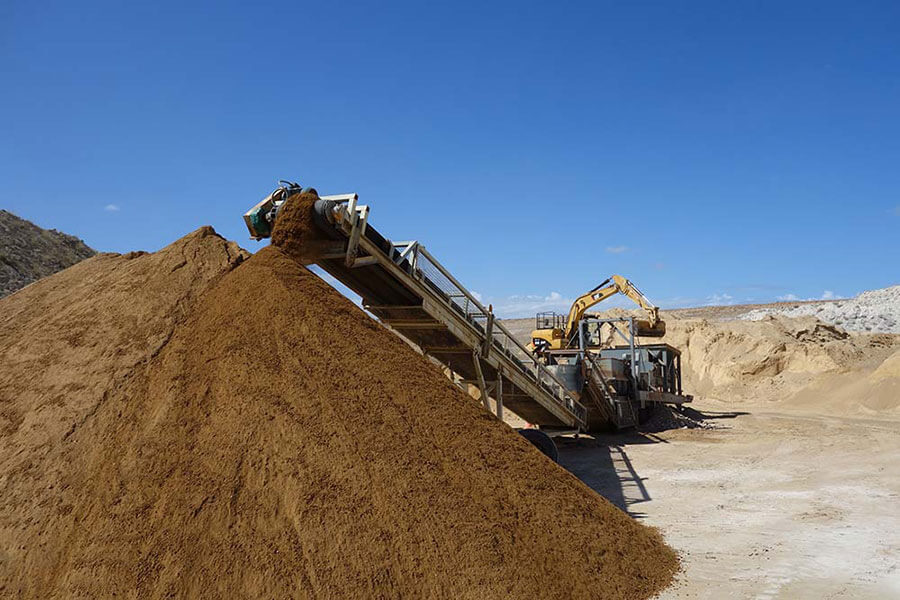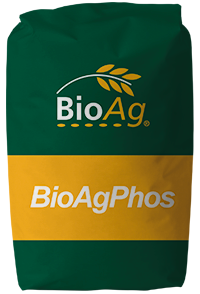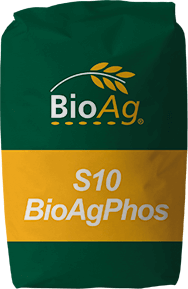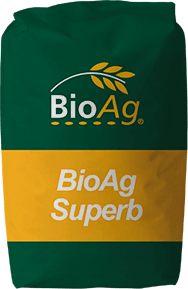
Agronomy
Topic
Reactive phosphate rock fertilisers
The phosphate rock used as a fertiliser in agriculture is known by a number of name, including Reactive Phosphate Rock (RPR), Direct Application Phosphate Rock (DAPR), Mineral Phosphate, Soft Rock, Hard Rock, and other variations.
Can phosphate rock be used as a fertiliser?
The right phosphate rock, used effectively, is an excellent source of long lasting phosphate.
The quality of phosphate rock and its suitability for use as a fertiliser varies depending on the mine or even the pit from which it is mined.
Laboratory analysis or field trials are the most effective way to test the suitability of phosphate rock as a fertiliser.
Is phosphate rock ‘organic’?
Being a natural mineral, phosphate rock is commonly sold and promoted as an organic product. Being organic does not guarantee the effectiveness of phosphate rock as a fertiliser.

Processing BioAgPhos at our Geelong facility.
The availability of phosphorus determines effectiveness
While phosphate rock is commonly defined by the total amount of phosphorus or P, it is the availability of the phosphorus that will determine the product’s effectiveness as a fertiliser. When assessing phosphorus availability, the most important aspect is to ensure you use a laboratory that is capable of analysing phosphate rocks. Soil and mineral laboratories may not use the correct methods.
The most common way to measure P availability is through dilute acid extraction. The more that is extracted the more available the P in the rock.
How is phosphate content in RPR measured?
The common ways to measure phosphate content in phosphate rocks are; Phosphorus (%P) and Phosphate (%P2O5).
Download white paper
For the full white paper, including any analysis and data, download here.
What about BioAg’s products?
BioAg’s products are manufactured using high grade, highly reactive Algerian phosphate rock. After adding our proprietary phosphate digester, with its blend of microbes and microbial food, BioAgPhos® composts for between 14 to 20 days before it is ready for sale.
BioAgPhos has been laboratory tested and used in a number of replicated trials to prove its value as a fertiliser.
Want to know if a BioAg program including BioAgPhos will give your crops or pasture the P it craves? Talk to one of our qualified and experienced Area Managers.
BioAg products using reactive phosphate rock

BioAgPhos
Solid Fertiliser
Highly reactive phosphate fertiliser made from high-grade reactive phosphate rock combined with BioAg’s microbial digesting agent.

S10 BioAgPhos
Solid Fertiliser
Provides elemental sulphur in the form of sulphur bentonite. Ideal for higher rainfall and higher leaching environments.

BioAg Superb
Solid Fertiliser
Incorporates calcium sulphate in the form of gypsum in BioAgPhos. Ideal for soils that need phosphorus, sulphur, and calcium, such as pastures and grazing, and for crops requiring extra sulphur, such as canola.

MagPhos
Solid Fertiliser
Incorporates dolomite in BioAgPhos. Ideal for soils that need phosphorus, sulphur, calcium, and magnesium, such as pastures and grazing systems where there is a risk of grass tetany.

PotPhos with MoP
Solid Fertiliser
Incorporates Muriate of Potash, Sulphur Bentonite and BioAgPhos in a blend ideal for soils that need phosphorus, sulphur, and calcium such as pastures and grazing.


Recent Comments